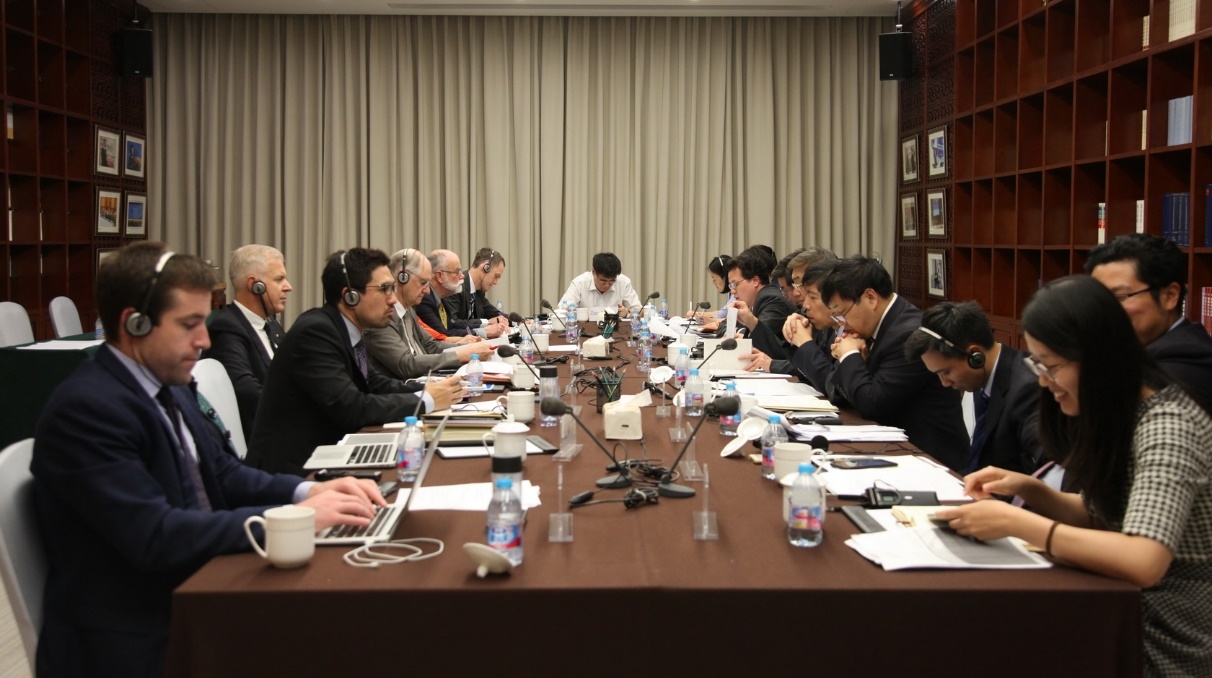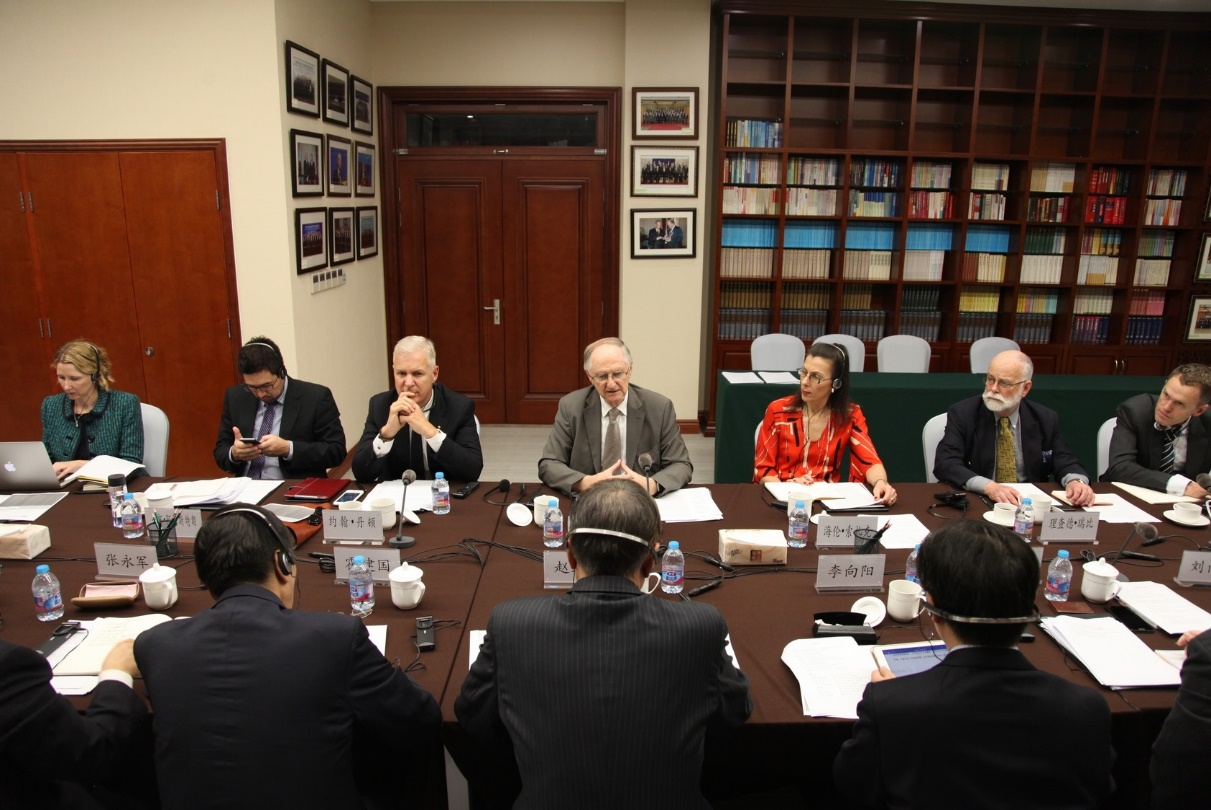Australia-China: Forging a Comprehensive Partnership for Change
- Time:2017-08-25
- source:CCIEE
On August 17, 2017, CCIEE and the East Asian Bureau of Economic Research (EABER) at the Australian National University co-hosted a seminar in Beijing, discussing the progress of the “Australia-China joint Economic Report (The Report)”. Officials from the Chinese government and the Australia Embassy to China were present at the seminar.

At the seminar, the participants reviewed the recent development of the Australia- China economic relationship and discussed the top priorities of the two governments in terms of strengthening the bilateral relations. Specifically speaking, the experts from both sides exchanged their views on the following four aspects.
1. Promoting the establishment of the Australia- China Commission.
2. Launching high-level bilateral research on the belt and road initiative of China.
3. Promoting the negotiation on the bilateral investment treaty.
4. Accelerating the creation of the Regional Comprehensive Economic Partnership.

The two sides reviewed the recent development of the Australia-China relations, saying that despite the sluggish global economy of last year and the increased policy uncertainties of some developed countries, the growth of the bilateral trade and investment between China and Australia remains roust.

The bilateral trade between the two nations reached approximately 110 billion US dollar in 2016, much higher than the growth of world trade. From January to June of 2017, the figure increased to 67 billion US dollar, a year-on-year increase of 40%, thanks to the significant progress in Australia’ commodities export and diversified trade. A forecast of such kind of diversification is included in the report. While China’s total purchase of iron ore has risen to 80%, the export of iron ore from Australia to China has also risen to 60% and the price of iron ore has also increased to certain extent. This can be seen as solid evidence to prove that the Australia-China trade relation is market-oriented.
The conclusion of the Australia-China FTA has begun to improve the quality of the trade relationship between the two countries. Although two highly concerned Chinese investment projects were rejected by Australia recently, China has become the biggest foreign investor in Australia for three consecutive years, with a total investment of 47.5 billion Australia dollar. Furthermore, Australia’s interest in investing China’s ever-increasing services industry is also increasing.
The healthy development and adaptability of the Australia-China relations not only made the negative comments unconvinced but also highlights the rationality of the analysis of the report.
Calling for the establishment of the Australia-China commission
The report claims that a new Australia-China partnership should be based on the participation and investment of high-level officials. To achieve that, the two countries should firstly make joint investment in their national ability. Thus, the report recommends that a resourceful and independent Australia-China commission (The Commission) should be created.
The commission aims to improve the level and range of exchanges in policy, research and science of certain key areas between the two countries. A joint high-level task force should begin to work on details. The commission will come up with a core framework set by both nations and support exchanges and transparent investments between the two countries.
Supporting the research on the belt and road initiative
The two countries should commit themselves to undertake joint researches which supported by high-level officials, analyzing how can the belt and road initiative deepen and enhance the links and relations between the two countries. The belt and road initiative has provided a great framework for advancing international economic cooperation through strengthening the connections among policy, trade, investment, finance, and especially the infrastructure.
The belt and road initiative will be able to realize the vision of the Australia-China partnership on the basis of the Australia-China FTA. Australia welcomes the promotion of bilateral cooperation and business opportunity with third countries, especial those can promote development.
Promoting the development of investment partnership jointly
The report suggests that the Australia-China investment partnership need to be developed under the framework of the Australia-China FTA, so as to build one country’s confidence in foreign investment from another country. This proposal has been accepted by the two countries since the release of the report. Specifically speaking, the policy of setting up the pillars of the foreign investment system should be non-discriminatory and aimed at consolidating the principle of national treatment in the areas of foreign investment. The existing foreign investment review system of Australia is likely to increase the costs and uncertainties for China’s capital to conduct commercial activities in Australia, thereby dampening the confidence of the Chinese investors who are conducive to Australia. In order to allow Chinese investors enjoy similar screening and examination as other investors in Australia do when entering the Australian market, Australia has a lot of work to do. As the key infrastructure center of Australia begins to operate, the uncertainties in investing in infrastructure will be reduced.
The Australian scholars pointed out that foreign investors are still faced with restrict access and excessive protection when trying to enter some key fields in China. China has already begun to implement the negative list and the principle of national treatment, nonetheless, more changes are still needed in this regard. Both China and Australia ought to aim for building a predictable and transparent foreign investment review system, which can set a good example for the development of partnership in other fields.
Carrying forward the Regional Comprehensive Economic Partnership (RCEP)
China and Australia should strive for the completion of core negotiation on the RCEP with other Asian countries. The RCEP involves half of the world’s population and more than one third of the world’s total output. A large RCEP will increase the income level within the region by 2-9 percent.
The uncertainties of the global trade policy have increased dramatically since the publication of the report. Global trade has seen a marked slowdown, on top of that, the threat on global openness and the rising protectionism made it more urgent for the RCEP to bring the integration and development of Asian economy to the next stage. It has also demonstrated the necessity of protecting the openness of global trade. The RCEP has become the only major trade negotiation mechanism of today’s world.
The RCEP is not just one of the traditional trade and investment treaties but also includes an important cooperation agenda, which is the core of enhancing the ability of economic reform and strengthening regional development and cooperation. The cooperation agenda of the RCEP that is in process is of great significance for politics and security because it will help to boost regional cooperation and easing regional conflicts.
The Australia-China Joint Economic Report is supported by the governments of the two countries and focuses on the bilateral relations. The report is completed by well-respected researchers and experts of both countries and offers an authoritative and in-depth analysis of the bilateral relations between China and Australia. Moreover, the report is one of the outcomes of the cooperation between CCIEE and the EABER. The research findings of the report clarify the direction of the bilateral economic relationship between China and Australia in the next ten years.
The EABER of the Australian National University is a forum for high-quality economic research focusing on issues facing the economies of East Asia, located at the Crawford School of Public Policy. It comprises representatives from Japan, China, South Korea, Vietnam, Cambodia, Laos, Thailand, Malaysia, the Philippines, Indonesia and Australia. The main role of the EABER is to coordinate research cooperation in relation to Asian Economy.
